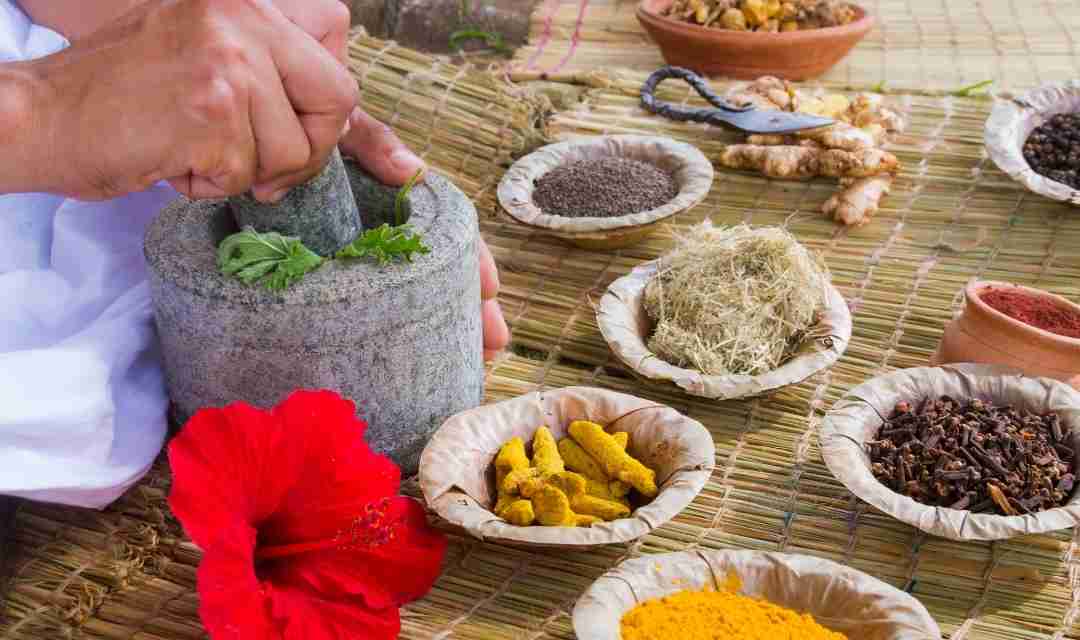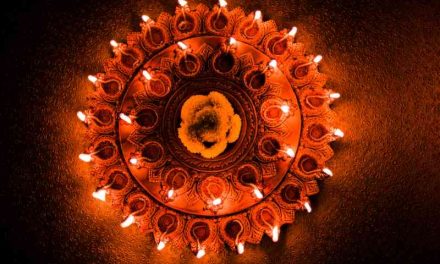Our contemporary lifestyle and health-conscious habits are combined with old knowledge about the use of natural substances, medicines, and herbs to help us live a more healthy and happy life that is free of stress and illness. Why is ayurveda so popular around the world? Let us evaluate further.
Ayurveda is a system of medicine that combines the best of both worlds: our modern lifestyle and health-conscious habits with the ancient wisdom of utilizing natural substances, medicines, and herbs. In 1976, the WHO (World Health Organization) recognized Ayurveda as a system of medicine.
For thousands of years, Ayurvedic medicine was regarded to be one of the most effective methods to cure illnesses and maintain a healthy lifestyle in ancient India, and it continues to be so today. Due to the importance of sustaining excellent health, we began incorporating Ayurvedic ideas and concepts into our contemporary society as well.
Approximately 5000 years ago, the Indian medicine system of Ayurveda was progressively created and refined. Ayurveda’s teachings are included in the Vedas, one of the world’s oldest surviving texts. According to several historians, the Chinese and Arabs acquired medicine in India and carried it to Europe, leading in the creation of various systems of medicine.
As the traditional Hindu study of medicines and beliefs, Ayurveda may be defined as follows: Ayurveda is very popular in India. In the mind, body, and soul’s holistic well-being. This branch of research is concerned with more than only therapeutic qualities. However, it is sometimes referred to as a way of life. Ayurveda has taught us this. To maintain the balance and tranquillity of our surroundings, body, and mind.
However, the most essential thing to remember is to keep yourself healthy. It is a popular philosophy that is practiced by many people around the globe. To assist individuals in reaching their full potential as human beings. Ayurveda has many branches and dates all the way back to the dawn of civilization.
Due to the fact that it was taught and spread orally by eminent academics. And it was subsequently printed. Today, traces of this religious healing practice is visible. As with Homeopathy’s medical approach, Polarity treatments are also used. Ayurveda has a long history.
Throughout history (and even today), Ayurveda has thrived and developed despite adversity. India was ruled by many kings who repressed, outlawed, or withheld support from Ayurveda in order to promote alternative systems of medicine such as Unani, Modern medicine, and/or Homeopathy.
Occasionally, the prohibition is imposed as a result of specific laws such as ahimsa (nonviolence) enacted by certain Buddhist rulers, who prohibited Ayurvedic surgery on the grounds that all operations inflict suffering.
Despite these conditions, and despite the fact that Ayurveda sometimes had faults, Ayurveda continued to flourish and serve people, since Ayurveda has the ability to assist and cure individuals suffering from a variety of health problems. Following India’s freedom, its popularity began to spread beyond its borders.
Ayurveda is the science of life
The definition of life is one of the most difficult challenges that most disciplines must overcome. Ayurveda, on the other hand, defines life. The connection of body, mind, and spirit is a basic description of life. Ayurveda understands life and provides guidance to improve lifespan and quality of life via its ideas derived from Indian philosophy that are very relevant and successful in practice.
Ayurveda is still relevant and useful today.
Despite the fact that Ayurveda is founded on ideas established thousands of years ago, they remain relevant and effective today. These ideas enable Ayurveda to comprehend and cure newly found illnesses. Indeed, Ayurveda’s potential in today’s environment is greater. Maintaining a strong relationship with nature and adhering to Ayurveda may help avoid the onset of lifestyle illnesses.
When taken correctly, the majority of Ayurvedic herbal medicines have little or no adverse effects, making them safe to use in old age. Additionally, Ayurveda may be combined with other medical systems to treat complicated diseases and/or to avoid or minimize adverse consequences.
Ayurveda places a premium on wellness and illness prevention.
In the Susruta Samhita, a text dating from BC 500, Ayurveda describes health as ‘a balance of bodily components, appropriate elimination, and healthiness of particular perception, mind, and soul.’ Almost all Ayurvedic classics begin with defining, caring for, and encouraging health. Ayurveda describes daily routines, seasonal routines, nutrition, as well as social and vocational aspects that contribute to our overall well-being.
Ayurveda aids in illness prevention and promotes overall well-being.
By incorporating Ayurveda into your everyday life, you may avoid the onset of illness. Additionally, Ayurveda believes that an illness develops when it has passed through four phases of pathology. If these phases are detected early enough, it may be feasible to halt the progression of pathology and avoid the development of subsequent illnesses.
Ayurveda is simple to practice.
At times, you may have difficulty digesting Ayurvedic principles. However, they are simple to follow. These concepts may be applied to everyday behaviors such as breathing, eating, food selection, sleep, and activities. Understanding the Ayurvedic system of bodily constitutions may even help you preserve your relationships. Apart from their specific benefits, the majority of Ayurvedic external therapies are soothing and pleasant.
Ayurveda offers a distinct perspective on the body.
According to Ayurveda, the human body is seen on a different level than that of the physical body. Our body is composed of three fundamental components (humors/doshas). They are called the air factor (Vata), the fire factor (Pitta), and the water factor, respectively (Kapha). When these functional particles are in balance, they promote health; when they are out of balance, they promote illness.
The governing dosha varies according to many variables of fertilization. This is why we are all unique. Ayurveda refers to these unique qualities as prakruti (Ayurvedic bodily constitution), a term with broad applicability. Understanding one’s prakruti may assist in determining which regimens and therapies are most effective for you.
There are other bodily components such as agni (digestive fire), ojas (body essence), and prana (subtle energy of the body) that are unique to Ayurveda and whose nurture may improve both the quality and quantity of life.
Ayurveda offers a diverse array of therapies.
An increasing number of people are turning to Ayurveda for help. Ayurveda recommends medicinal meals, teas, and jams, herbal juices and pastes, hot and cold infusions/teas, tablets, powders, alcohol-based preparations, fat- or oil-based preparations, herbal oils, tinctures, ointments, and medicated distilled waters. Ayurveda makes use of a variety of active components found in plants that are soluble in water, lipids, and/or alcohol.
Additionally, these media assist medications in effectively bypassing various bodily barriers. Ayurvedic body therapies are also used in conjunction with internal medications when feasible and/or necessary to facilitate rapid healing. Occasionally, exterior therapies alone are sufficient for disease recovery.
This is especially critical if your GP/specialist has prohibited you from taking any other medications, including herbs, internally. Ayurvedic body therapies include hot oil massage, pouch massage, therapeutic scrubs, and the application of herbalized oil or liquids to the body and/or head (shirodhara). Ayurvedic body therapies may be customized to meet specific requirements.
Apart from its medicinal properties, each of these body treatments is very soothing. Apart from these general body therapies, there are specialized detoxification procedures known as panchakarma, such as emetic therapy, purgation, and medicated enema. Thus, in the majority of instances, you may choose a therapy that is emotionally, culturally, and fiscally feasible for you.
Ayurveda- A holistic approach to life
As though you were both wrapped in a warm cloak. On a chilly December morning, both mentally and physically. As a part of your everyday life, Ayurveda provides comfort in its whole. This Ayurvedic method not only revitalizes the body, but also the mind. It revitalizes your mind, soul, and surroundings as well. As a result, understanding of Ayurveda benefits you. Additionally, you create a more deep aura. With increased self-awareness and inner harmony.
As each nation does, with its own culture, customs, and set of laws. Ayurveda also develops and makes us aware of our body culture and norms via the principles that comprise its constitution. That is how our own constitution is formed. As a result, our spiritual constitution is composed of emotional, bodily, and mental traits. That is determined by a variety of variables. That we carry with us for the remainder of our lives.
It is critical to comprehend. The order and the forms of disarray. That takes place inside and around our bodies. There is a possibility of mental distress or physical disease. The disturbance of our natural order is the cause of that. As a result, it is essential to ascertain the negative components.
That contribute to the imbalance and works with Ayurveda to restore our body’s natural order. Ayurveda is recognized as a genuine medicinal system in contemporary Indian culture. Practitioners undergo organized medical training that is licensed by the state. Around two-thirds of India’s rural population, which accounts for 70% of the population, relies on Ayurveda for basic health care.
Ayurveda its benefits
Loss and Maintenance of Weight
A balanced diet and lifestyle changes facilitated by Ayurvedic therapies aid in the loss of extra body fat. Weight is not a primary issue in Ayurveda, but eating habits are. It is possible to get a toned physique by enabling the body to cleanse via proper food limitations.
Talk to a doctor about the ideal diet for you based on your nutritional requirements and how it will fit with your specific dosha.
Skin and hair that are radiant and healthy
Are you looking for the ideal radiance and shine in your hair? Ayurveda asserts that you may forego costly professional treatments in favor of organic and natural methods for achieving a glow without spending a fortune. A well-balanced diet, toning exercises, and Ayurvedic supplements are sufficient to support skin and scalp healthy.
Dietary recommendations based on Ayurvedic principles emphasize the intake of fresh foods while considering your dosha type, medical history, regional produce, customs, and traditions into consideration.
The emphasis is mostly on foods that are rich in antioxidants, herbs, teas, vegetables, protein, and healthy fats.
Bid Farewell to Stress
With a fast-paced existence that provides little time for restoration or relaxation, Ayurveda ensures tension and anxiety are reduced. Yoga, meditation, breathing exercises, massages, and herbal therapies all help the body to relax, cleanse, and revitalize on a regular basis.
Yoga strengthens the autonomic nerve system, which keeps your mind awake and energetic throughout the day.
The practice of mindful breathing helps to keep illnesses at bay while also providing the cells with an abundance of oxygen, which helps to develop a feeling of awareness. Shirodhara, Abhyangam, Shiroabhyangam, and Padabhyangam may all be used to alleviate depression and anxiety.
Inhibit Inflammation
Unhealthy eating habits, inadequate sleep, inconsistent sleeping patterns, and a poor digestive system may all contribute to the development of inflammation. Inflammation is at the core of many illnesses, including neurological disorders, cancer, diabetes, cardiovascular issues, lung ailments, and arthritis.
As you begin eating in accordance with your dosha type, your digestive system strengthens. Consumption of certain meals at the appropriate times helps to eliminate toxins from the blood and digestive system. As a consequence, this results in improved vitality and energy, as well as a general reduction in lethargy and mood swings.
Ayurvedic therapies are also well-known for their cancer-prevention properties. A combination of turmeric and black pepper is the finest example of an Ayurvedic herbal composition.
Purify the Body
Panchakarma is an Ayurvedic technique that involves the removal of body impurities via enemas, oil massages, bloodletting, purgation, and other oral delivery.
By giving these components to the human body, it is possible to eliminate food and poisons that obstruct the body’s effective functioning.
A cleaned body contributes to general health improvement. Cumin, cardamom, fennel, and ginger are all suitable home remedies that are extensively used in Ayurvedic herbal treatments to treat indigestion and avoid bloating.
Reduced Blood Pressure, Cholesterol, and Illness and Disease Symptoms
According to researchers, Ayurvedic diets and relaxation methods may help prevent plaque formation. Plaque develops as a consequence of cholesterol and lipids accumulating in the inner lining of the arteries. Atherosclerosis is the underlying cause of heart attacks and strokes.
It is possible to supplement your diet with herbs, vitamins, minerals and proteins according to Ayurvedic medical principles. These are combined in an optimum dose and given at the best time to prevent and treat immune-related diseases.
Essential oils and herbs used in Ayurvedic medicine assist to enhance blood flow, improve blood circulation, and remove toxins from the body via the skin. Why is Ayurveda so popular around the world? I hope this blog answers this question.





